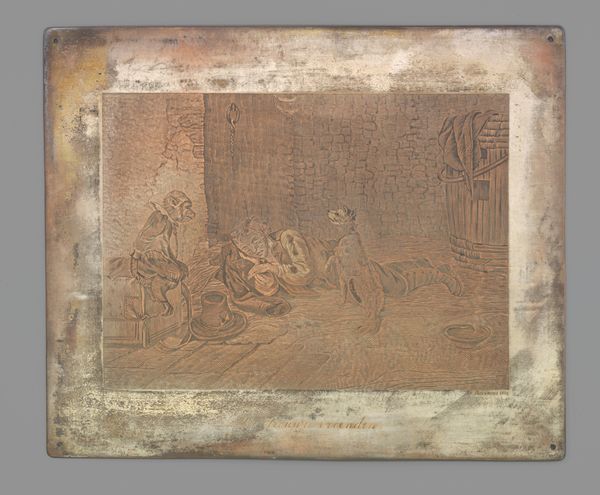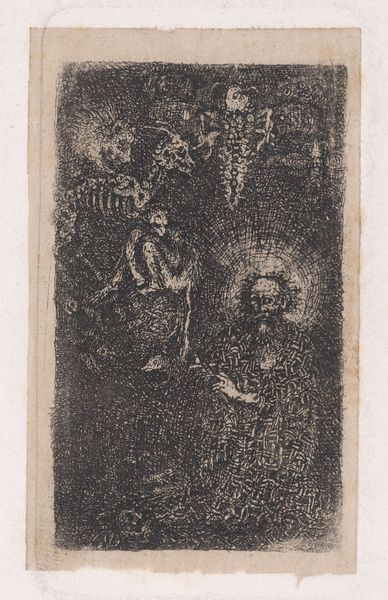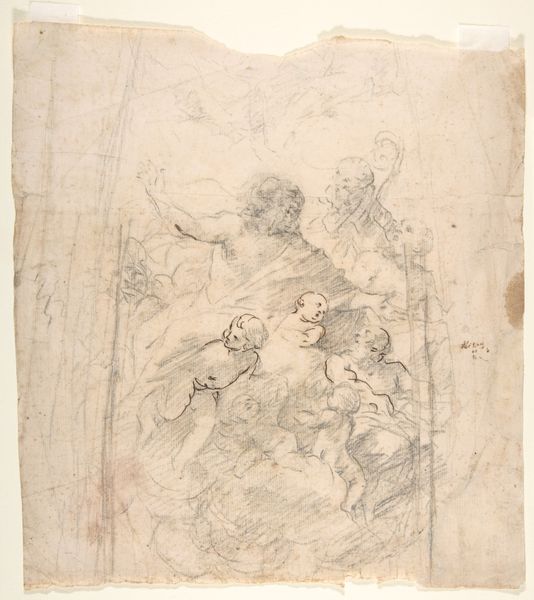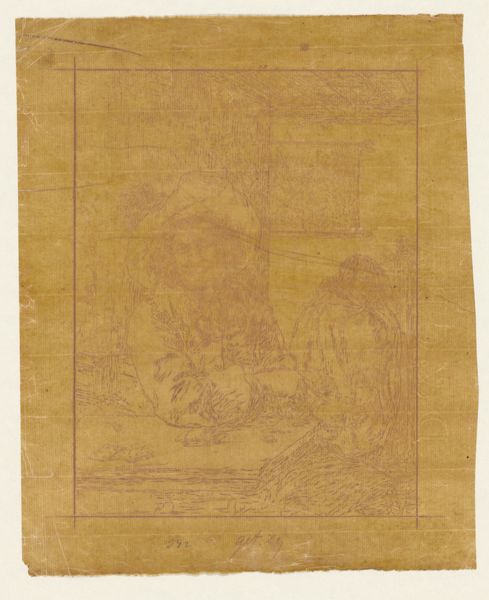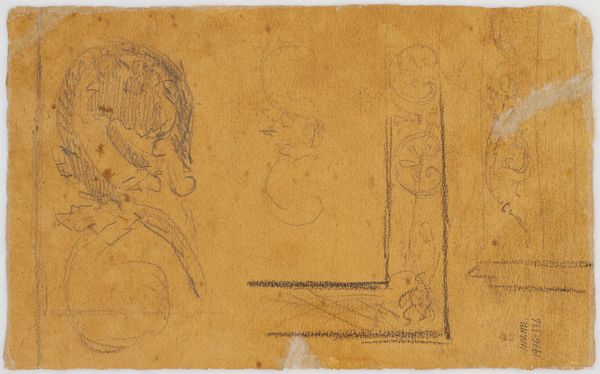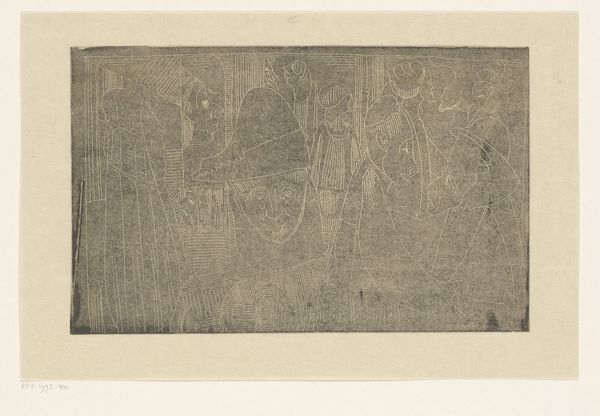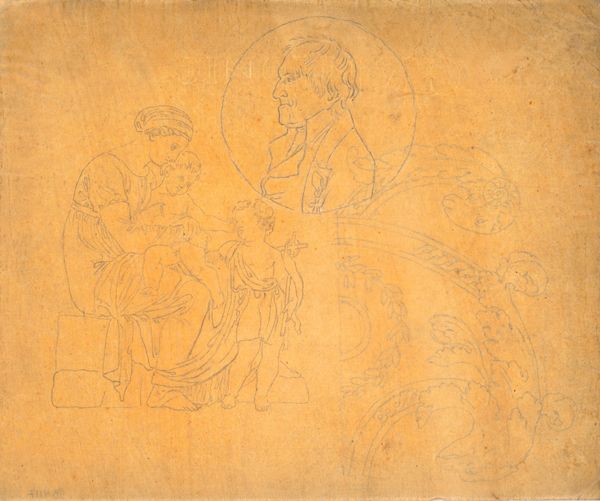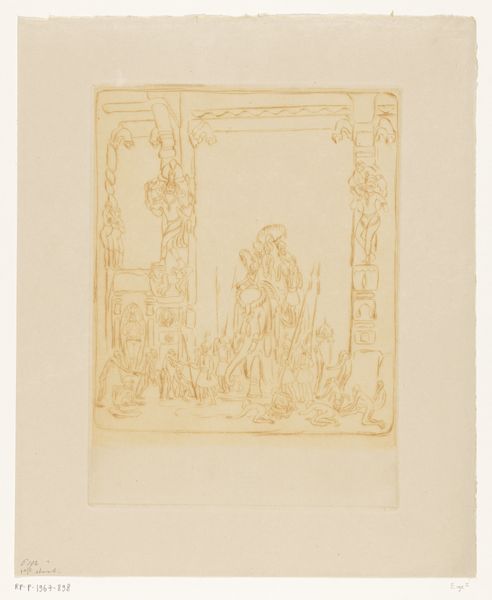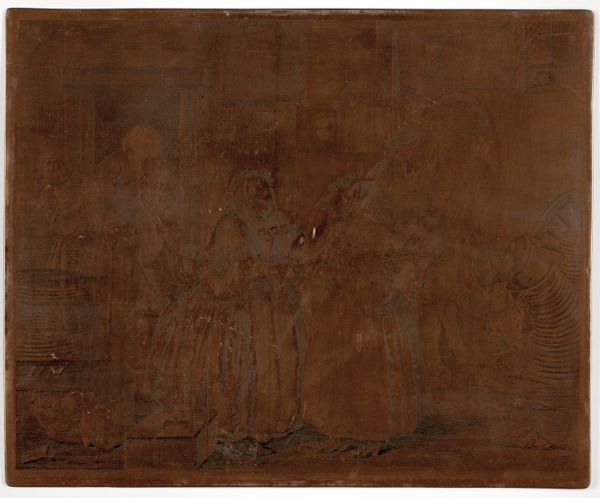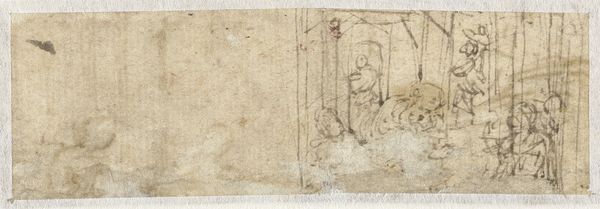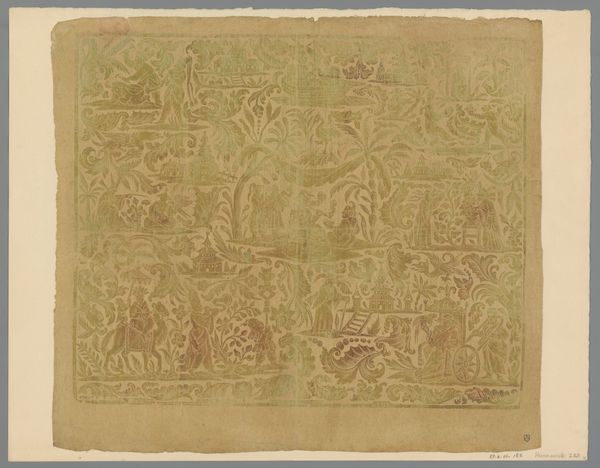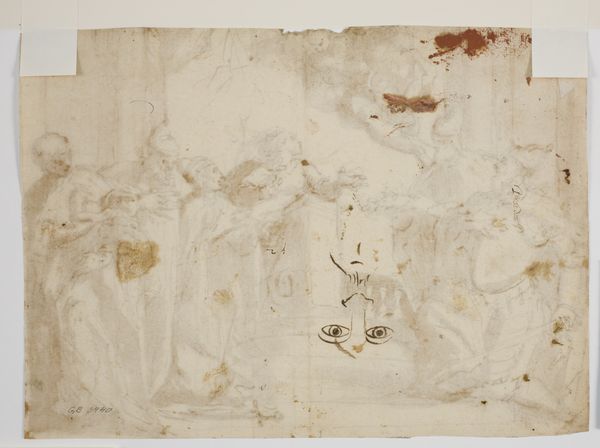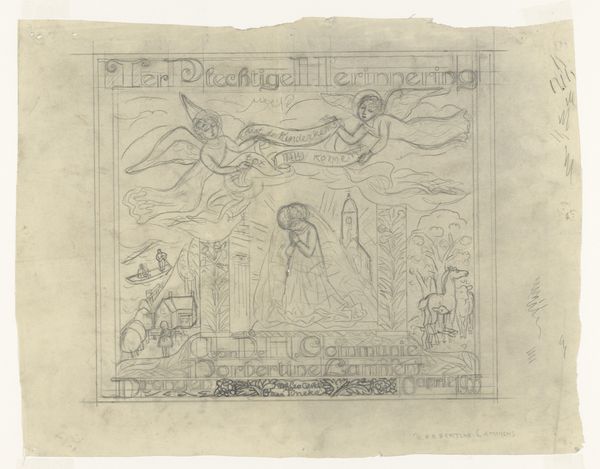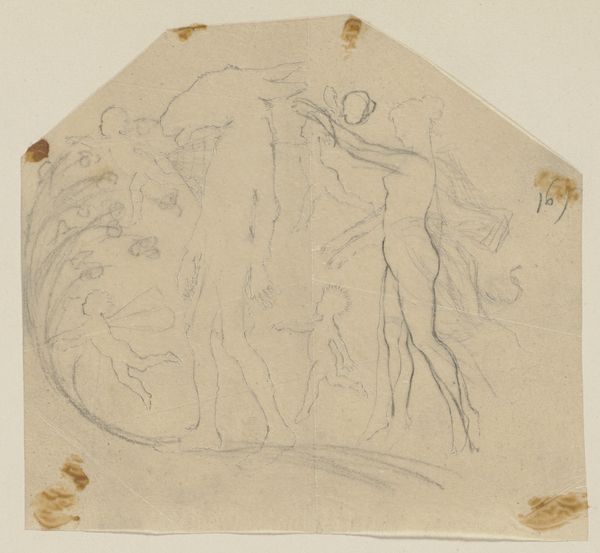
drawing, print, paper, ink, woodcut
#
drawing
#
narrative-art
#
ink painting
# print
#
charcoal drawing
#
figuration
#
paper
#
ink
#
woodcut
#
symbolism
#
post-impressionism
#
watercolor
Dimensions: 202 × 346 mm (image); 206 × 346 mm (sheet)
Copyright: Public Domain
Paul Gauguin made this monotype titled, ‘Te atua (The God)’ as part of his Noa Noa Suite. It reflects his time in Tahiti during the late 19th century when he was searching for an unspoiled paradise, outside of Western influence. Gauguin was part of a larger colonial project; European artists, writers, and intellectuals looked to non-Western cultures as a source of renewal, turning to the “primitive” for new artistic inspiration. His work is marked by a desire to break from academic artistic traditions, in favor of the so-called authenticity he believed existed in Polynesian culture. Yet, his representation of Tahitian spirituality, as seen here in ‘Te atua’, is a romanticized and exoticized vision, filtered through a Western gaze. His art often obscures the complexities of cultural exchange and the impact of colonialism on the local population, as he grapples with themes of spirituality, sexuality, and the exotic. Consider how the colonial context shapes not only the creation of the work but also its reception and interpretation.
Comments
No comments
Be the first to comment and join the conversation on the ultimate creative platform.
